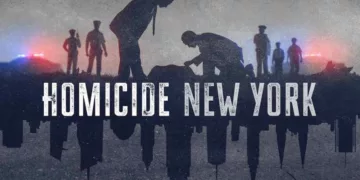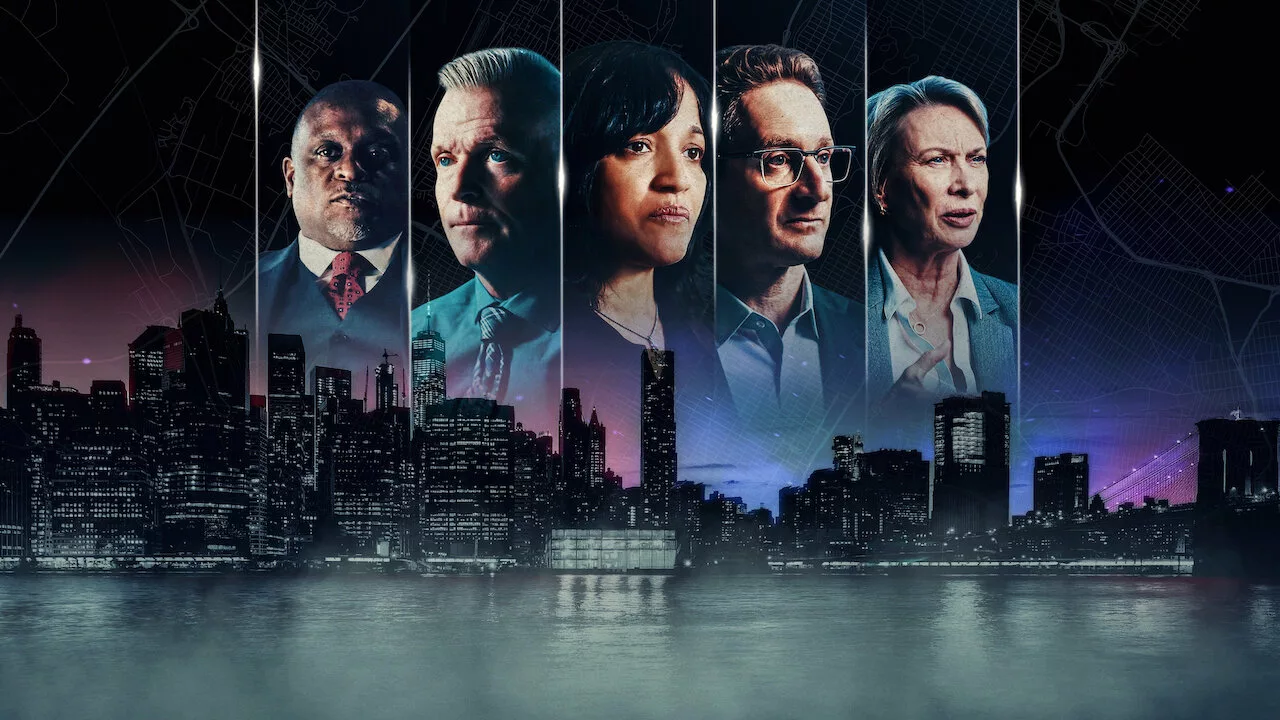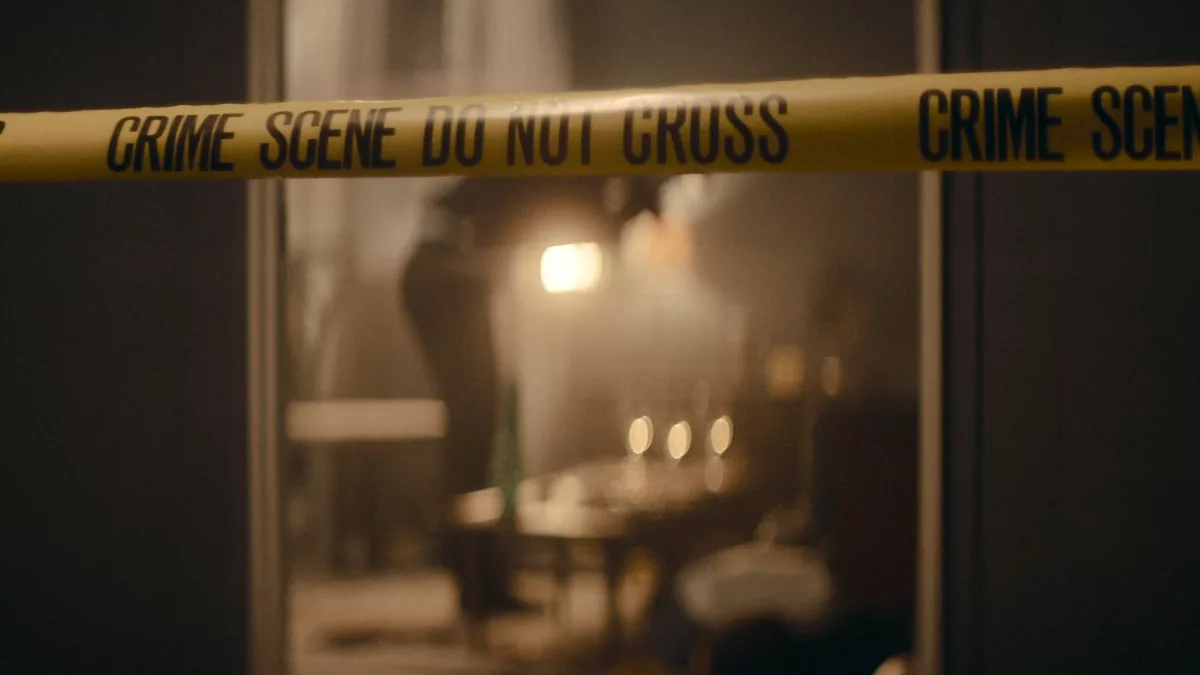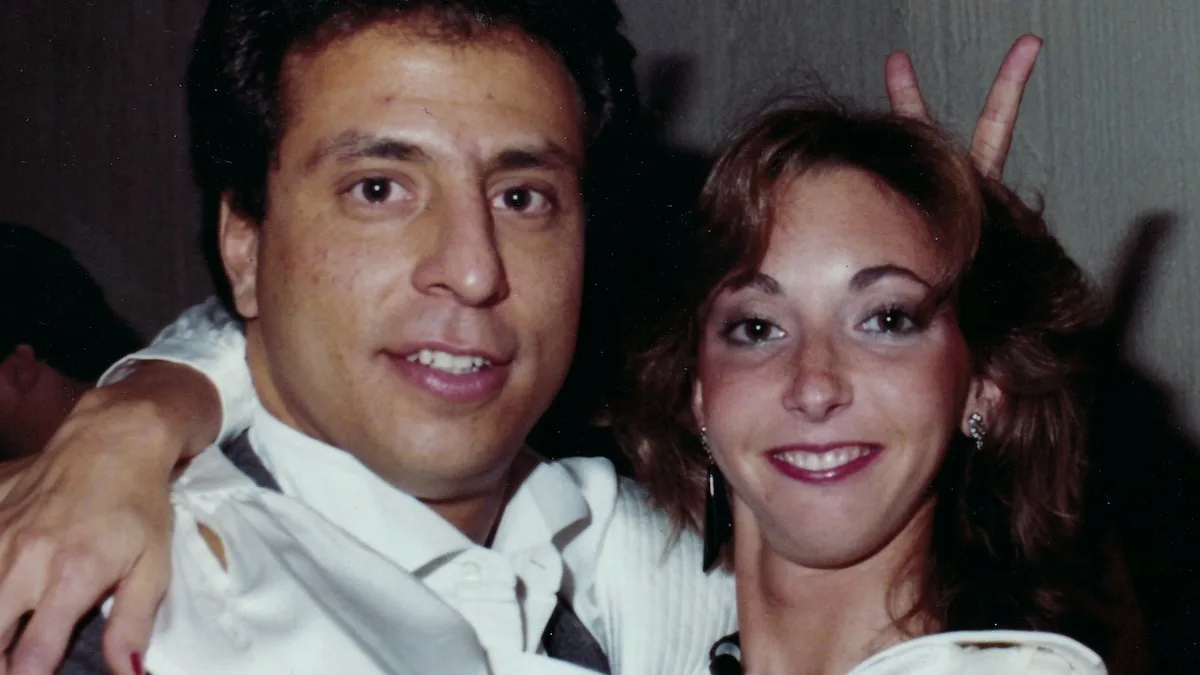In its five intriguing episodes, Homicide: New York takes us inside some of Manhattan’s most gripping murder investigations. The docuseries is the work of Dick Wolf, creator of the iconic Law & Order crime franchise beloved by many TV fans. Wolf chooses a factual storytelling style this time, focusing on the police work rather than courtroom drama. Through interviews with real-life detectives and prosecutors, we learn the details and context of five notorious cases.
Adopting a procedural format like Wolf’s classic shows, each episode meticulously outlines the steps of an investigation, from crime scene to conviction. Witness accounts and video evidence are pieced together, theories are tested, and suspects are closely examined.
Viewers feel like observers in the squad room as motivated teams of NYPD cops work tirelessly to solve their assigned homicides. We also gain insight into the methods and challenges of profiling unsubs and building solid cases for prosecution.
While celebrating the efforts of law enforcement, the series doesn’t lose sight of nuance. Detectives reflect on missed opportunities and assumptions with the benefit of hindsight. Interviews don’t shy away from touching on the imperfections of any large institution.
By humanizing the police as thoughtful individuals who continue to ponder their work years later, Homicide: New York crafts a balanced portrait of protectors navigating an unsafe urban world. Ultimately, it pays tribute to those who solve murders while acknowledging the complexity of justice.
True Tales of the Big Apple
The first episode revisits the shocking Carnegie Hall massacre that took place in May 2001. When five people were found bound and shot in an apartment above the iconic deli, it sparked a major investigation. Detectives had little to go on at first, but surveillance footage and dogged police work led them to identify two men responsible for the heinous crimes. Interviews with both a survivor of the shooting and the family of a victim helped tell the tragic story.
We then learn about the brutal slaying of Michael McMorrow, whose body was discovered eviscerated in Central Park Lake. With no witnesses and scant clues, the police had their work cut out to solve this baffling murder. That’s when an unexpected tip came in that would point the finger at two teenage private school boys as the alleged killers. Their interrogation unveiled the shocking motive behind the heinous act.
In the financial district, a woman named Eridania Rodriguez mysteriously vanished from the office tower where she worked as a night cleaning lady. With no signs of exit, police searched frantically for clues within the skyscraper. It wasn’t until several days later, thanks to some lucky breaks, that investigators found Rodriguez’s remains hidden away in a disturbing location.
True Crime, NYC Style
This five-part series from Netflix takes a decidedly procedural bent in reexamining some notorious homicide cases from Manhattan. It aims to immerse viewers in the gritty realities of law enforcement through detailed accounts of the police work and forensic methods used to crack each case.
Much like the iconic Law & Order TV series it draws inspiration from, each episode of Homicide: New York follows a similar step-by-step format. We learn about the initial crime scene and the evidence-gathering process. Then we’re led through the subsequent investigation as clues are pursued and persons of interest are identified. Interviews flesh out witness statements and the evolving theories of the detectives assigned to the case.
Eventually, the suspects are apprehended, and interrogations play out. District attorneys weigh in on preparing an airtight prosecution. The satisfaction of seeing justice served as guilty verdicts are delivered brings each story to a close. Throughout, we gain insights into the challenging nature of police work from the experienced personnel involved.
By prioritizing procedural elements, this approach provides a you-are-there perspective of real-life police investigations. The behind-the-scenes glimpses into forensic analysis, surveillance tactics, and interrogation techniques prove quite compelling. This level of engagement hooks viewers by turning abstract crimes into fully-realized dramatic narratives.
However, solely focusing on the functional aspects also comes with drawbacks. More could have been explored in terms of depth, such as root causes or prevention strategies. While meant to humanize law enforcement, some risked veering toward self-promotion over objective analysis. And with crimes already solved, tension loses its edge.
Still, for those with an interest in true crimes and the justice system, this up-close view of cases through a procedural lens offers a fascinating look at the grit and grittiness of NYC homicide detection. More than entertainment, it serves an informative role in pulling back the curtain on how these crucial systems aim to work for victims.
True Crime with a Blue Hue
One thing you can always expect from a Dick Wolf production is a favorable portrayal of law enforcement. Homicide: New York largely follows this script, presenting a mostly glowing depiction of NYPD detectives and prosecutors. But it doesn’t entirely gloss over the complex realities of policing either.
Right from the opening scenes, it’s clear whose side the documentary is on. We meet dedicated men and women from the Manhattan North and South precincts, working tirelessly to solve the most depraved of crimes. Their tenacity shines through as stories unfold of DNA diligently tracked down and suspects pursued across state lines.
It’s easy to root for the authorities as they tenaciously seek justice. But stripping all nuance from such a layered profession risks coming off like “copaganda” to some viewers. The show rarely examines factors like tunnel vision or institutional biases that can impact investigations.
Where Homicide shows a glimmer of depth is addressing the personal impacts on officers. Many detectives express lifelong regrets for leads left unturned, questioning if just one more detail noticed could have solved a case sooner. In retrospective interviews, they reflect on their own humanness rather than just heroics.
The series also doesn’t deny the missteps that prolonged cases. The Wall Street disappearance, for instance, saw a body overlooked within the very building for years. Portraying such flaws adds authenticity, even if it doesn’t dwell on systemic policing issues, which some see as bigger conversations.
Overall, while usually positive, the series makes efforts at nuanced portraits rather than one-note glory stories. It recognizes that police are not infallible, but human beings are deeply invested in victim advocacy. Through both triumphs and regrets, Homicide: New York aims to show the humanity within law enforcement’s complex realities.
Shining Light on Signature Cases
Homicide: New York casts its spotlight on some infamous New York murders. Each episode digs into a crime that seized the city’s attention, whether terror in Central Park or a Wall Street vandalism act. Focusing on these iconic cases brings its own benefits and drawbacks.
Looking at the assaults that gripped the city lends instant intrigue. Viewers instantly feel tied to places like midtown’s Carnegie Deli or uptown’s East Harlem streets. We vividly see how these settings played host to unspeakable acts. Painting New York’s familiar backdrops into a world of violence and fear sends shivers.
Tackling cases with staying power in the public eye also means a wealth of source material. Between old files and lingering community impacts, rich details surround these signature crimes. With so many threads to pull, reconstructing the acts and investigations remains engaging.
However, shining a light so tightly risks overshadowing much else. Zooming in on precise locations and high-casualty crimes courts sensationalism. The show tantalizes with terror rather than shedding light on its roots.
By choosing episodic storytelling over a broader lens, Homicide misses opportunities. We learn little about societal factors tying into criminal psychology or systemic policing issues. Glimpsing individual trees prevents seeing the forest of greater trends.
Moreover, singling out headline-grabbing cases risks misrepresenting reality. Most homicides lack the intrigue of settings seen on postcards. Ordinary crimes deserve the same dedication, even if their stories don’t immediately captivate.
With time, focusing closely also invites nitpicking at missed angles. Viewers rightly question why loose ends or easy leads went untouched, like an overlooked body in plain sight.
Overall, Homicide’s chosen turf brings viewers to iconic corners of the city. But by zoning in so tightly, it misses chances for richer context that could have amplified key issues beyond thrills. Its choice of highest-wattage stories courts curiosity but curtails understanding.
Beyond the Badge
Homicide: New York isn’t just about revisiting old case files. These tough murders play out through the people involved, both good and bad. We meet real folks behind the facts, shown as more than job titles.
Interviews take us straight to the source—the detectives who committed these crimes. Folks like Brian MacLeod give grizzled work a lighter side. Just toss him some metal tunes so he can scour the footage for clues. Irma Rivera draws out the human in even her hardened suspects.
Medical examiner Barbara Butcher brings her dry wit. “You can’t just shoot five people in New York,” she notes—the city won’t stand for loose ends. These personalities breathe life into old reports. We understand how quirks like Butcher’s humor or Rivera’s empathy proved invaluable to cracking cases.
Victims’ loved ones open old wounds to honor the lost. Frank Pilmar still speaks nightly to his son decades later, haunted by what-ifs. Their recollections show lives cut short and family bonds that can’t be severed even by time.
Perpetrators appear only through officers’ eyes, recalling pivotal interrogations. We see how different styles wear down stone walls. Tactics that flopped for one detective succeed under another’s touch. Their interplay feels real, not just reenactments.
Even bad guys get shades beyond mugshots. One teen killer comes across not as a monster but as “some punk kid” in Detective Mooney’s view. Not excuses, just hints that crimes rarely have single causes or culprits.
Throughout, interviewees shine beyond just their casework. Quiet introspection shows these experiences still linger, forcing self-scrutiny. Wagner admits to second-guessing himself constantly. Their humanity stops “Homicide” from becoming a heartless drama.
So while facts fade, the faces behind them stay vivid. In shining a light on the people, not just the police work, the series finds meaning still left to unpack decades later. These stories live through the individuals who refuse to let even the most bitter of endings be the final word.
Pursuing the Truth
Homicide: New York brings gritty cases to light while sticking close to a procedural format. For those fascinated by the workings of investigations, its step-by-step glimpses prove compelling. Interviewed officers speak candidly, offering a glimpse of what drives their relentless work.
Yet this storytelling choice yields benefits and limits. Viewers follow clues meticulously and understand how different styles crack hard nuts. But focusing on processes leaves little room for pondering deeper issues. We learn little about the factors breeding tragedy or the hard truths about imperfect systems.
Future installments could pursue greater nuance. Not to cast unfair blame, but to foster understanding. Peel back layers, motivating both victims and perpetrators. Probe biases seen and unseen; question where prevention failed. Instead of heroic tones, meet officers as people—dedicated yet prone to flaws.
A balanced approach would respect officers’ work while strengthening narratives. Give psychology and sociology their due in weighing why and how crimes arose. Show lives cut short as more than props in stories of capture. With care and candor, show the truth’s complexity to audiences willing to face hard realities.
Homicide establishes a platform to elevate these discussions. By opening probing eyes and ears to complexity on all sides, it can achieve justice through comprehensive truth. The pursuit remains and grows richer for reflecting multiple facets of human experience. Future stories may find an opportunity to pursue truth in all its nuanced fullness.
The Review
Homicide: New York
Homicide: New York provides a gripping look at harrowing cases through the eyes of dedicated detectives. However, its procedural focus risks minimizing larger issues in favor of dramatic storytelling. By diving deeper into societal roots and exploring multifaceted truths, the series could achieve its outstanding potential to both honor challenging work and prompt crucial discussion. When balancing an engaging story with greater understanding, future installments may find an opportunity to truly do justice to these real tragedies.
PROS
- Captivating retellings of gripping real-life cases
- Insider perspectives from interviewed detectives
- Production values enhance tension and intrigue.
- Engaging focus on procedural investigation
CONS
- Narratives prioritize drama over addressing root issues.
- Simplified portrayals of societal factors and systemic biases
- Potential to further exploit subjective memories and experiences
- Opportunities are missing for critical analysis and discussion.





















































